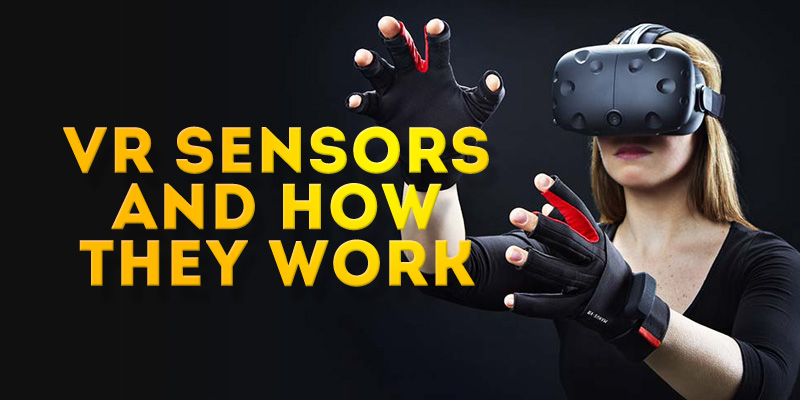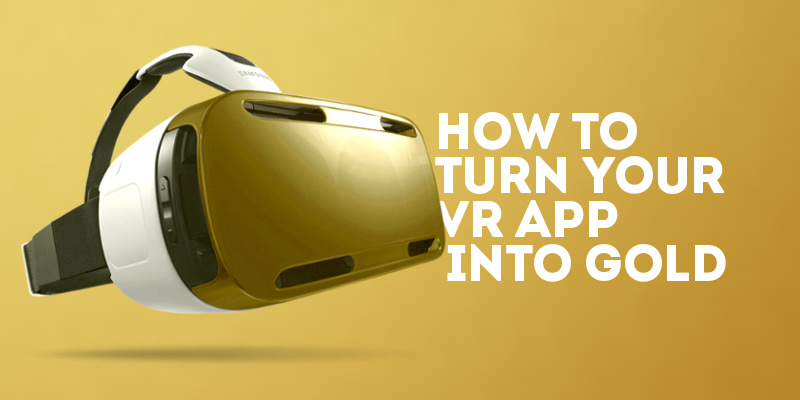Not so long ago we’d be sitting on buses or in boring meetings twiddling our thumbs. These days, our thumbs are a little busier thanks to our ever present companion, the smartphone.
Beyond the obvious ability to distract and delight in equal measure, we have something else to be thankful for when it comes to the smartphone - the insides. You see, the development of mobile technology has given us countless iterations and improvements on key pieces of technology. Today, we are all walking around with miniature computers in our pockets, chock full of tiny, sophisticated sensors.
Now, we hear you ask “what does this have to do with Virtual Reality?” Well, three of these sensors have been crucially important to the development of the consumer VR experience we know and love today. And in this article, we’ll take a closer look at all three.
Motion, Space, and Microelectromechanical Systems
The VR sensors we’ll come to discuss are necessary to translating our movement and understanding of space into the virtual world each and every time we pull on our VR headsets.
But before we get into the detail underpinning these sensors, it’s important to first discuss microelectromechanical systems, or MEMS for short, to give you an indication as to the scale of these devices.
They are literally microscopic in size, embedded in solid-state silicon microchips. The MEMS technology can be used to develop the mechanical and electrical components required to build devices like gyroscopes at such an incredibly small scale. Without it, our smartphones, and indeed VR headsets, would be chunky and ugly rather than the slim and streamlined models we’re used to.
An Overview of the 3 VR Sensors
The three sensors that have become so essential to modern VR devices are accelerometers, magnetometers, and gyroscopes. They allow us to measure motion and direction in space. This in turn allows us to translate movement into a virtual environment.
In the past, VR hardware was typically expensive and unwieldy. But thanks to the proliferation of mobile devices, these incredibly important sensors have become very cheap and very, very small.
Here we take a look at them all in a little more detail:
What is a Magnetometer?
It shouldn’t comes as too much of a surprise, but a magnetometer is a device that can measure magnetic fields. It essentially acts as a compass, and by being able to detect magnetic North, it can always tell which direction it is facing.
Magnetometers are able to work in several different ways. Some will make use of permanent magnets, while others will use electromagnets. No matter how it is being powered, when the magnetometer comes into contact with a magnetic field, the extent and direction of the magnetism can be measured.
We’ve recently seen it be used rather cleverly with Google Cardboard. Developers repurposed the sensor so as to function as a button click when a magnetic ring was slid up and down another magnet to generate a fluctuation in the magnetic field.
What is an Accelerometer?
The accelerometer actually has a number of different functions, but it is primarily used to let your device know which way it is facing. For instance, on your smartphone or tablet, the accelerometer will tell your device whether it should be in portrait or landscape mode depending on the way in which it is being held.
A single accelerometer can tell when it is in line with the pull of gravity, but by combining three is when things start to get interesting. With three - one for each axis (x, y, and z) - your device can tell which way up it is since each axis is fixed.
And these tiny, intuitive devices can measure more than just device orientation. As you would expect with a name like ‘accelerometer’, it can also measure acceleration along a particular axis.
In cars, they can be used to trigger airbags in the event of a crash where the g-force exceeds a certain threshold. In phones and other wearable devices, they can track the speed at which its user is traveling, be it on foot or by another mode of transport. And in motion sensing devices such as VR controllers, they can understand the strength with which its user is swinging in a certain direction.
How to Develop a Successful VR Application
Here we take a look at how to make Virtual Reality apps, the technologies involved and the process behind…
Just like the magnetometers, the accelerometers are microscopic in size. They are made up of a comb structure, and when gravity or g-force unsettles the combs an electrical current is generated and subsequently translated into acceleration data.
They do, however, have their limitations. While motion data can be gleaned from combining readings from all three axes simultaneously, it’s not possible to produce data to represent the rotation of a device. For instance, if you were using your smartphone as a VR viewer, the accelerometer would not be able to tell when your phone is being gradually moved as you are not applying any lateral force to it.
In fact, that’s where the gyroscope comes into play.
What is a Gyroscope?
The gyroscope is the device that is used to calculate orientation. Here’s a great example of a mechanical gyroscope in action. You’ll note that regardless of how the frame changes its orientation, the spinning disc in the center stays true to its original plane.
This is typically very important in an aircraft, where heavy cloud cover might make it impossible to know if the plane is flying level.
Naturally, the gyroscopes in our smartphones and VR devices do not look much like the mechanical ones. But they do achieve the same outcome, just in a different manner. Usually the micro gyroscopes will use vibration as means of understanding rotational measurement, which are in turn translated into electronic data.
Bringing Them All Together
Although we broadly discussed there being three sensors that are used to bring the modern consumer VR experience to life, the fact is in our smartphones, head mounted displays, and motion controllers, there are often many variations of each of these sensors.
Your device might include multiple gyroscopes, magnetometers, and accelerometers so as to produce a rich and complex sensory input that can be understood by the software as being incredibly accurate in its movement and relationship with space.
When all of these virtual reality sensors are brought together, the ultimate goal is to achieve the six degrees of freedom. The 3 translations: up/down, forward/back, right/left, and the 3 rotations: pitch, yaw, and roll, combine to produce the six degrees of freedom (6DoF), which is the freedom of movement experienced by a rigid body within 3D space.
This is important for Virtual Reality tracking as the user’s actions (such as head or hand movement) must be accurately and seamlessly represented within a virtual environment, otherwise the illusion is shattered.
What’s more, modern VR headsets must be able to offer motion tracking across all six degrees of freedom, otherwise the virtual experience can become somewhat unpleasant. While you may be able to turn and tilt your head, without the full range of movement, such as leaning or crouching, you might succumb to motion sickness when your eyes are seeing one thing in the virtual world and your inner ear is experiencing something else entirely in the real world.
How Can Appeal-VR Help?
The evolution of smartphone technology has certainly had a positive impact on the world of VR hardware development. This has opened the door to even more sophisticated and complex apps as the overall user experience has been further improved.
With all this in mind, there really isn’t a better time to make your Virtual Reality app idea happen. And thanks to our unparalleled experience in custom VR app development across a whole host of business verticals, we can help you take your first steps into this soon-to-be billion dollar marketplace.
From your initial concept through to the design and development, we’ll be on hand to help you deliver an innovative and effective application that will send shockwaves throughout your industry.
So, what are you waiting for?
Turn your VR app idea into a reality by speaking with one of our app experts today.

 (7 votes, average: 4.86 out of 5)
(7 votes, average: 4.86 out of 5)

Published on: Nov 23, 2016. I believe we’ll update it soon. Thanks.